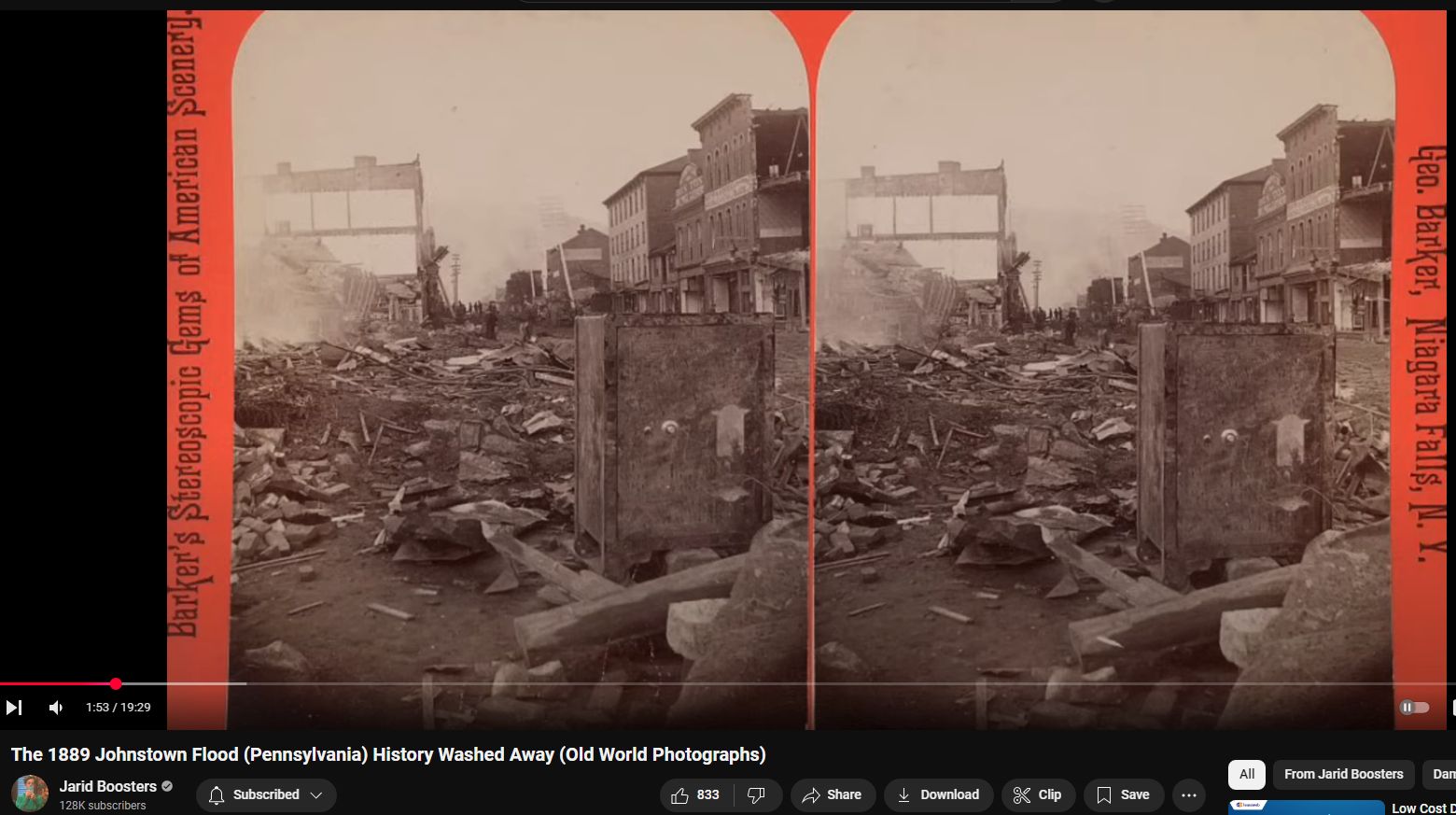Re-examining Johnstown 1889 Flood as Event Involving DEW
Gain the Eyes to See — Abiding our “Conspiracy First” method of presuming the very worst and trying to disprove it … yet finding mounting evidence hallmarking the use of DEW.
As usual: confusing, mysterious, unexplained UNTIL DEW is introduced as likely causal modus. Then, suddenly, and completely, EVERYTHING MAKES TOTAL SENSE. This was merely another land-grab and perhaps small-fry human sacrifice. Bet insists EXTREME unlikelihood that Johnstown was Zionic.

ABOVE: Grey/whitish mist hallmark of DEW. Smoke from fire of wet debris should be black, sooty not whitish grey and misty.
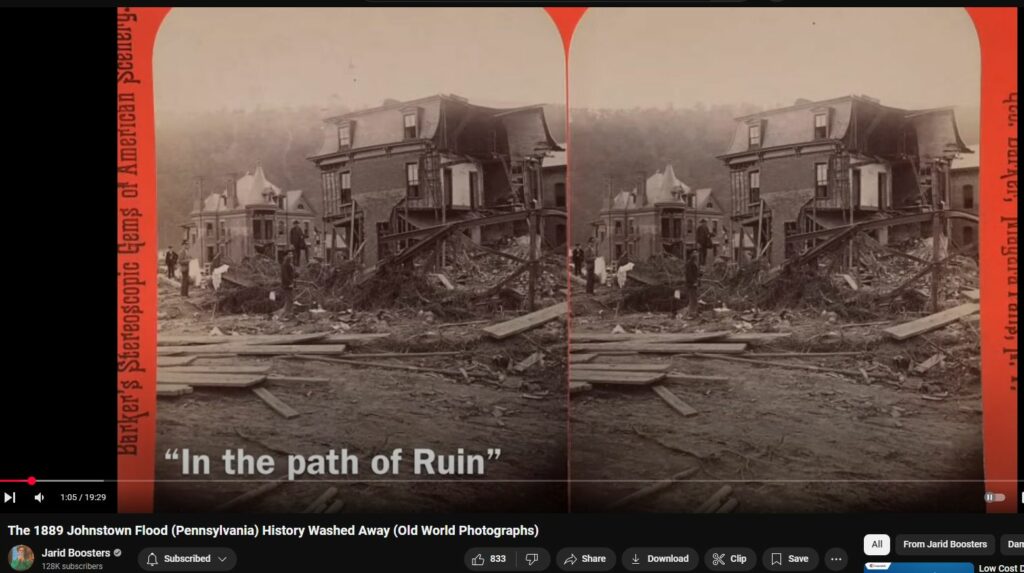
ABOVE: Notice wilted, warped steel girder. Steel is brittle and it cracks, shatters before warping or wilting, which requires heat from blast furnace or Directed Energy Weapons.
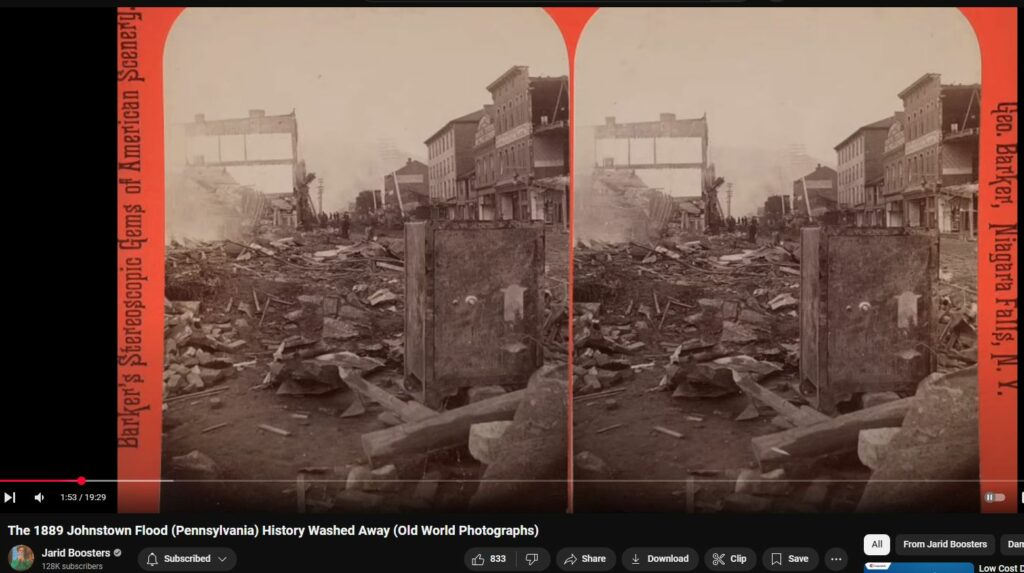
ABOVE: Greyish/white mist not the expected black, sooty smoke from wet debris. Notice “insta-rusted” safe another hallmark of DEW Attack.
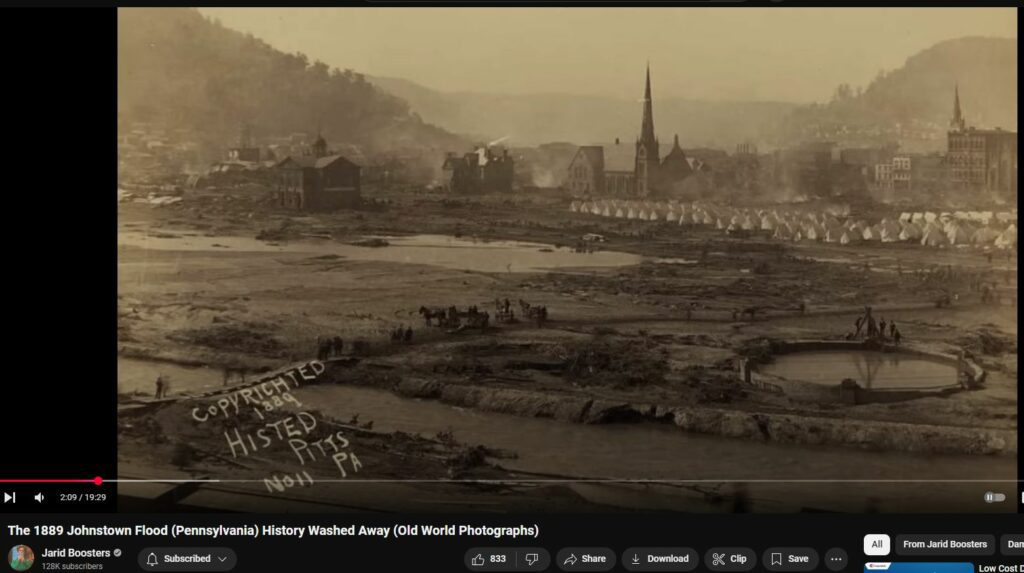
ABOVE: Whitish/grey mist not black sooty smoke. Also, too-quick a response indicates pre-marshalling of resources, indicated foreknowledge of the event, indicating a caused / causal relationship, not an accident.
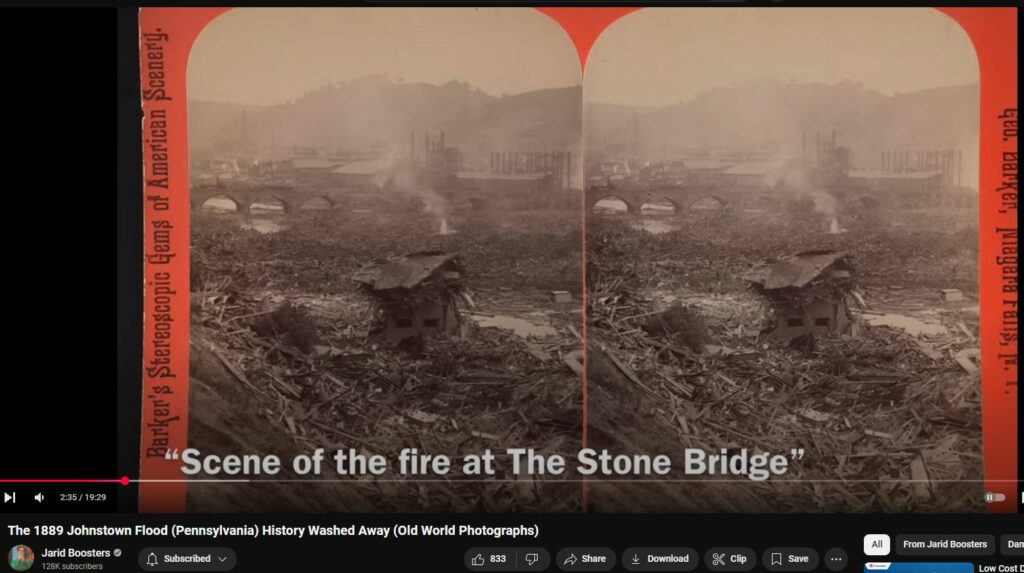
ABOVE: As ridiculous as ever, stone on-fire. LOL.
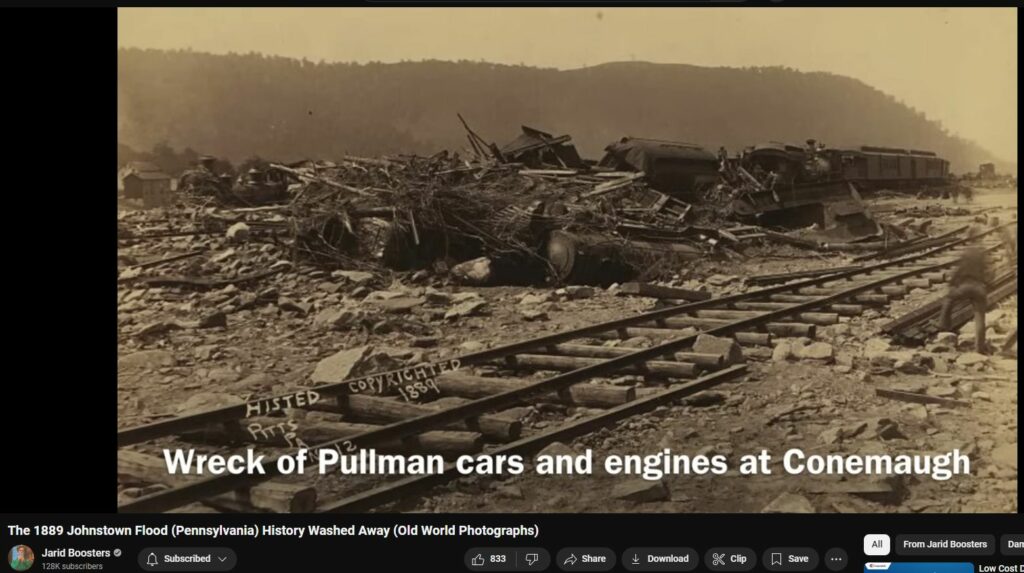
ABOVE: DEW warps railroad tracks. Why replace the tracks unless the original ones had been warped by DEW? Water does not warp or otherwise damage tracks. Not even a flood of water.
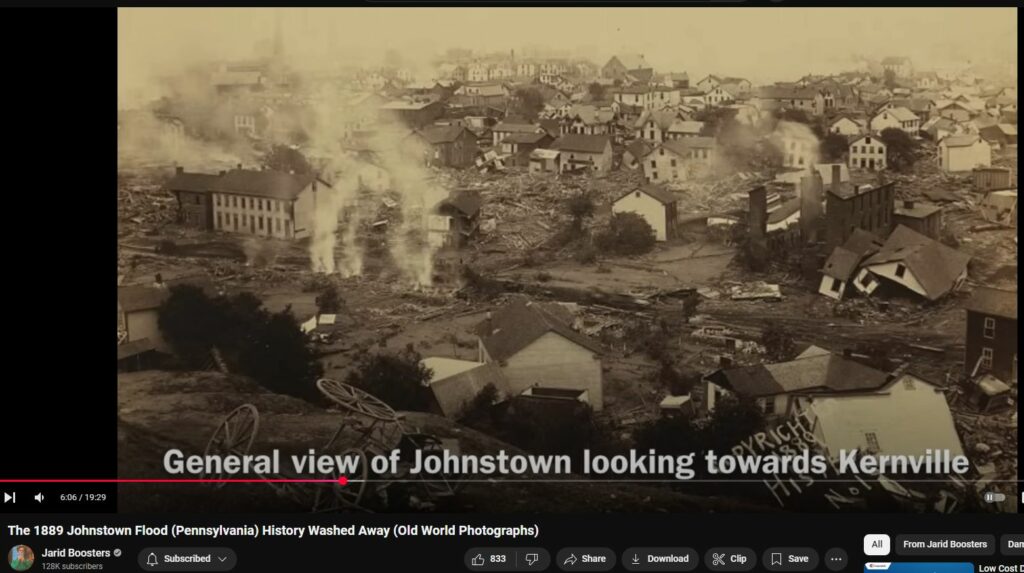
ABOVE: Tell-tale white/grey mist, not black sooty smoke. What lit up all those fires amidst such a tremendous flood of water? DEW.
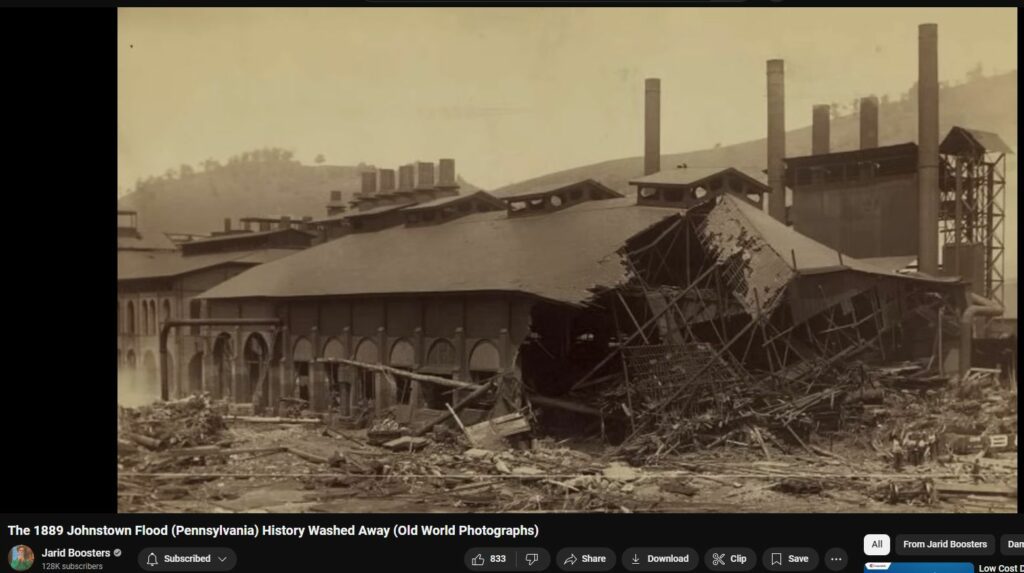
ABOVE: All buildings photographed appeared to have been imploded rather than sliced or sluiced away or ripped apart. Witness the falling-within-own-footprint characteristic of all DEW Attacks.
Re-examining the 1889 Johnstown Flood under the hypothetical scenario that Directed Energy Weapons (DEWs) existed and contributed to the disaster, a new interpretation of available evidence emerges.
Historical photographs from the aftermath of the flood depict extensive and unusual devastation patterns. Structures exhibit selective destruction, where certain buildings appear almost entirely obliterated while neighboring structures remain partially intact, indicating localized and targeted energy release rather than uniform flooding damage.
Eyewitness accounts, traditionally attributed to confusion or trauma, describing sudden, intense flashes of light preceding the collapse of the dam and subsequent deluge, align well with phenomena potentially resulting from directed energy applications. Furthermore, survivors’ descriptions of rapidly intensified heat and peculiar burns on victims and debris could hypothetically correspond to thermal effects characteristic of DEWs.
Additionally, structural analyses of the dam’s remnants may indicate forms of damage inconsistent with simple hydraulic failure. Some sections of masonry exhibit vitrification-like symptoms or melting that standard water pressure and debris impacts cannot typically explain.
While historically accepted interpretations attribute the disaster to engineering neglect and natural factors, reinterpreting the photographic and anecdotal evidence in light of hypothetical DEW involvement provides a coherent explanation for previously unexplained observations. This perspective warrants further analysis and investigation into alternative causes for one of America’s most devastating natural disasters.
